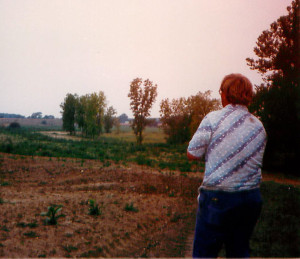With the land purchased in 1986, construction began in earnest in 1987. Whether your name is Pete Dye or Sam Taylor, a good golf course architect will tell you it’s important to incorporate the natural lay of the land as much as you can when designing and building a course. So Sam’s first step was to scout tee, green, and fairway locations that were already laid out by Mother Nature and try to utilize those wherever possible. The distinct shape of the dogleg left hole #10 for instance was already there much as it is today. Sam had other factors in mind too, like sunrise and sunset angles, irrigation sources, and sustainability of the course design. Having the course architect be the person who would care for the course in the future is a factor that makes StonyCreek unique to some other courses. When outside architects come in to design a course, they can sometimes leave a product that looks great on opening day but is not sustainable over the years. For example, StonyCreek is not flush with sand bunkers, however, the ones that are on the course are well maintained and cared for, and this was done by design. StonyCreek’s design also benefitted from the Taylor familiy’s previous experiences in building and operating Willow Brook and Sycamore Springs. Sam and Joe knew they wanted large greens and fairways to help disperse the wear and tear a public golf course sees in a season. They also envisioned a course that every golfer could play and enjoy. They understood that a golfer’s enjoyment of the course is what keeps people coming back. If you feel beat up by the course at the end of the round, you may be less excited about a return trip.
11800 East 166th Street | Noblesville | IN | 46060 | 317-773-1820
© 2025 StonyCreek Golf Club. Created for free using WordPress and
Colibri

